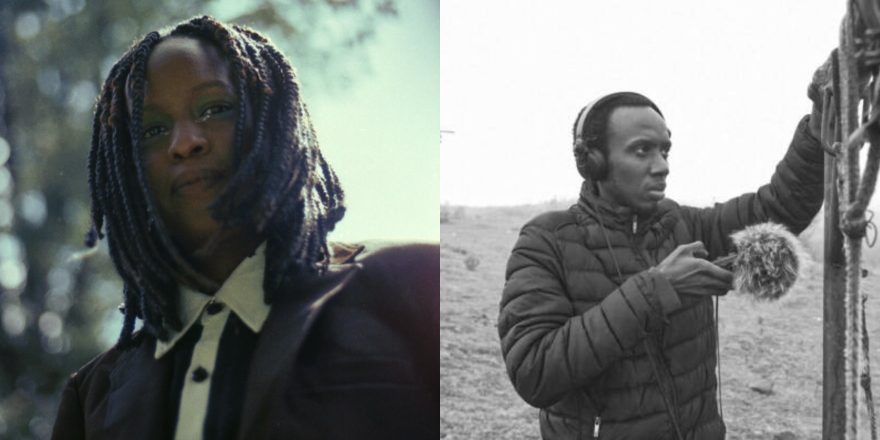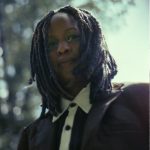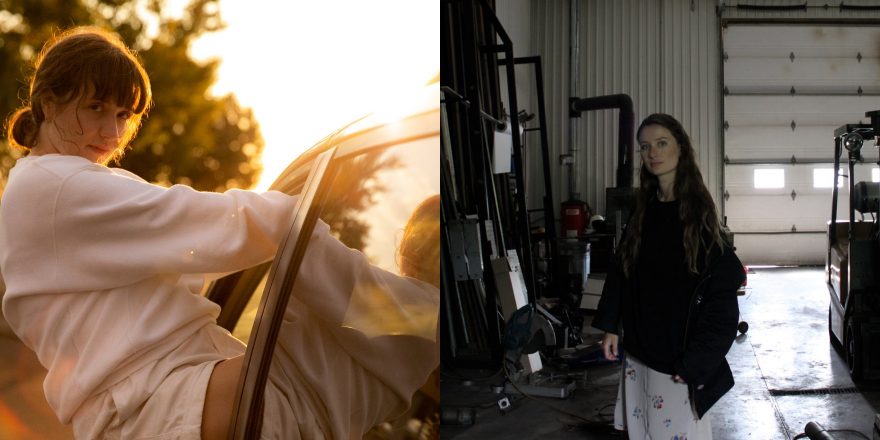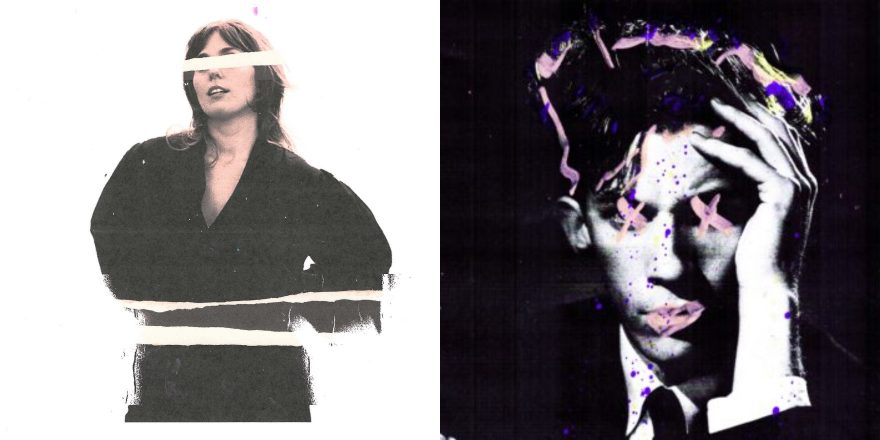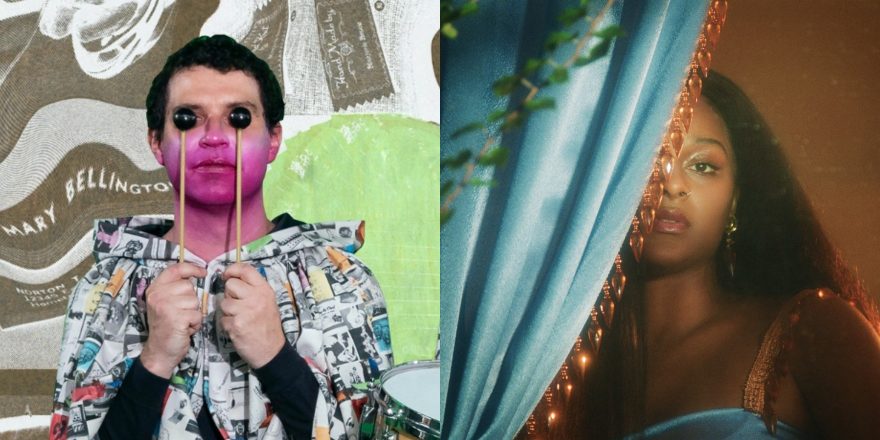KMRU is Joseph Kamaru, a Nairobi, Kenya-born, Berlin-based ambient musician. Nyokabi Kariūki is a Kenyan composer based between Nairobi, New York, and Maryland. Nyokabi’s EP peace places: kenyan memories is out today on SA Recordings, so to celebrate, the two friends hopped on a Zoom call to catch up about it.
— Annie Fell, Editor-in-chief, Talkhouse Music
KMRU: I’m curious to hear more about your EP outside the stories you mentioned online or publicly with other press — something that maybe nobody knows about the project.
Nyokabi Kariūki: [Laughs.] That’s a difficult question, I think I’m very open about this record. Maybe something that I haven’t mentioned is, essentially the whole thing behind this EP was that all of the field recordings were taken in different places around Kenya. But I cheated on one of the songs — the last track has field recordings I took in Maryland.
KMRU: I mention this because I also have projects where, when they’re out there, I am the only one who knows the secret of maybe one or two tracks that I don’t explicitly mention.
Nyokabi: Can you give us a secret as well? Because I just gave one!
KMRU: There’s this track on one of my albums that is a reversed track of the first track.
Nyokabi: Why is that a secret? Why is that something you didn’t want to tell people?
KMRU: I wanted to hear if somebody discovered it on their own, and maybe just decided to reverse one of the tracks!
Nyokabi: Did anyone figure it out?
KMRU: No. [Laughs.]
Nyokabi: In a way, it’s a bit like this for me with that last track on my EP, “Naila’s Peace Place,” where I time stretched the voice note that’s audible at the end. I’m also kind of waiting to see if anyone noticed that, for most of the piece, it’s a time stretch of the same audio. Someone had described it as “haunting,” but that’s actually not what I was trying to do with that. Which is fun! It’s fun to play with people’s expectations, I think.
KMRU: Yeah. I guess if people actively listen to pieces — because sometimes I get so critical while listening to music, and I can hear presets or other other sounds that I know where they’re from. Which could be nice, but sometimes I’m like, Maybe I shouldn’t be listening this way.
Nyokabi: Is it a conscious thing? Like, is it something you can turn on and off, how you listen to music?
KMRU: Yeah, I guess it depends on what context. [Sometimes] I’m just playing music in the morning and not listening, like I just want the mood of the particular album to be part of the space. And other times, I’ll sit down and close my eyes and listen to a whole album without doing anything. Other times I’ll find myself playing one track for a very long time just to understand how it’s made, like compositionally.
Nyokabi: I have a question for you: One of the reasons I thought this was such a cool conversation to have with you is because you’re also Kenyan and you’re also doing experimental music. You’ve heard this EP over the months that it was forming, so I’m very curious what that experience was of listening to it as you watched it change. And especially in terms of you being from Kenya and knowing or having some kind of familiarity with the places that I was talking about.
KMRU: I’ll answer this with a question in mind — I also use field recordings in my work, and having listened to the pieces as they were evolving, I could find connections with my work in some way, like how you use field recordings. I find it interesting how different people think about spaces they record in. Because I get how the whole project is [recordings] from specific places, and [about] your memories and stories, and there’s a strong involvement with the places that you recorded the sounds in and how you decided to use them in the music. It’s also a question I wanted to ask — how do you think about the places you record in? Because personally, I’ve become strongly involved with where I go, very intentional when I record and [with] why I’m recording the space. I’m asking myself all these questions before I decide to recontextualize a space into something else.
Nyokabi: So for the EP, I did not think about it in a very conscious way. A lot of the recordings, I did not record with this EP in mind, they were actually just audio from videos that I took when I was in those places. Very unthinkingly, I suppose, which I think is a cool part in terms of the idea of memories — because I literally took audio from videos that I was taking casually to remember these places.
I think I started to be more conscious of this EP when I was back in Kenya in December 2020. I was planning to do three pieces at the time, as concert music. And then when I came to Kenya, I had decided that it was going to be an EP. And so I think by that point, I was more aware that, Oh, I’m actually doing an EP about this. But even the second track, “A Walk Through My Cũcũ’s Farm,” again, that was just videos I took casually. Or the “Feeding Goats Mangoes” — it was just me and my brother literally feeding goats mangoes.
I was just very excited by this, to find the music within the field recordings. In a way, I think this is actually how the EP kicked off. “Galu” was the first track, and it was initially meant to be a concert piece, so I was thinking about it having fixed electronics with a live performer on stage. It was going to be a percussionist, so I wrote a score. But then the percussionist — his name is Chris O’Leary — was able to only record it in his house with recording equipment that he had access to. And so some of the sounds that, if it was in a studio, would have been so much stronger were not the case with the first recording that we had. So then a friend asked me the question of, “Why don’t you mix it to the medium? You’re making this this track in an electronic space, why can’t you play around with the drums and process them?”So that’s why it turned into an EP, away from a concert work.
So I think with the field recordings, I was kind of asking myself that same question, like, How do I take the recordings, however they are, and just see what I could do with them?
KMRU: Interesting how you think through this. I find myself in different positions when I consider myself a field recordist, being outside and recording sounds. Sometimes I question myself so much that I spend so many weeks without recording.
Nyokabi: What do you question yourself about?
KMRU: I think it’s my role as a recordist in the field. This happens mostly when I am in new places that I’m not so familiar with. Because when I was in Nairobi, I recorded so much — I have so many field recordings from Nairobi and Berlin, but mostly Nairobi. I guess it’s because I am comfortable recording in Nairobi, as compared to new spaces that I go and I have to make myself aware of my surroundings. [Like,] is the situation right to record, or does the environment need to be recorded? Because my friend was telling me that sometimes, maybe the natural environment doesn’t need to be recorded.
Nyokabi: Yeah, I was going to ask, what does that mean, that an environment “needs” or does not need to be recorded?
KMRU: As artists who deal with sound as the main tool for their work, all of us are constantly recording with our ears. So I guess having this new tool, these devices in the field to sort of pre-amplify the environment again — at some point, maybe it’s not needed. Sometimes you can just listen and try to understand it as it is, as it’s happening, and not have to take a fragment of it and put it in a musical piece.
But I guess it goes two ways, because I also feel it’s important to record sound, because most of our histories are not orally stored or archived — it’s mostly visual. Different projects that I’ve been involved in are trying to rethink of how maybe Nairobi sounded in the ‘60s, and it’s hard to find recordings of how Nairobi sounded. We have to just imagine.
Nyokabi: Yeah. I’m just thinking about this idea of an environmental needing or not needing to be recorded — there’s something very profound about that. When I think of this EP — not even only that, but some of the other works that I explored during the pandemic — I think so much of my work is including field recordings of my family and my immediate surroundings. So I think even I have had to kind of think about that in terms of, this is someone’s voice that, to use your word, I’m taking, and they don’t always know. This is interesting to think about in that context.
KMRU: Yeah. This reminded me of how I started field recording. I remember I actually didn’t know there’s a whole discourse around people recording sounds in the outside and bringing them in, in a musical context. And I was listening back to my really old tracks, which are more rhythmic, but I was [layering] sounds from nature with a rhythm or melody. During a residency in 2017, I remember having this iPod, and having earphones with a microphone. I was on a train for so long, and I was recording the sound of the train because it was interesting. I recorded a bunch of sounds, and made three tracks based on them. I had thought I couldn’t make music with only sounds — it felt like music had to be very rhythmic and have structure and form.
After some time is when I discovered an album by Chris Watson that was also related to a train journey [El Tren Fantasma]. It was just mind blowing that it didn’t have drums, there wasn’t a structure, and there was some form in it that stood out. Since then, I just went into a dive of discovering more artists who use recordings in their work.
Nyokabi: How interesting. I guess in my experience in how I came into field recordings — I knew it existed, maybe, because my background was in Western classical composition. I mean, not when I was in Kenya for high school, but when I was at NYU doing composition. There was just so much exposure to the music you’re talking about. There’s so much use in concert music, still, of field recordings. But I guess for some reason, I had never consciously thought that I wanted to incorporate it. It really started [when] I was working with choreographers for a course. We had to write music every single week. So when I have to do that, I don’t write a score, I just work electronically. I would just Google sounds from, like, freesounds.com. [Laughs.] And just start using them in the music.
In another interview I did a few days ago, we were talking about how pop music is having a field recording moment — like in Adele’s new record, there are some voice notes happening. And then in FKA Twigs’ new record — I know you’re a huge fan, and I’m also a fan, and in her mixtape there is so much voice note, field recording-ish stuff going on. I’m very curious what you think about this.
KMRU: From most of the pop music that I hear trying to use field recording, it’s mostly voice. And maybe background noise, or a bit of nature sounds embedded in the pieces.
Nyokabi: Does that annoy you?
KMRU: [Laughs.] No, it doesn’t annoy me.
Nyokabi: Oh, it annoys me slightly! [Laughs.]
KMRU: I don’t think it annoys me. Because I only hear mostly voice memos, and it’s something very personal to the artist that you can hear them sort of expressing themselves vocally or with their friends. And it’s not like a major part of the music that they want to present, it’s just like an interlude or an intro.
Nyokabi: Oh, yeah, that’s what I mean. It’s not annoying me that they’re using it at all — I love that it’s finding its way into the popular consciousness, I suppose. But I think sometimes I just wish that they were more bold about using it in different ways, in a way that’s not an interlude. That, to me, is what I’m more kind of fussy about.
I’m curious, when you’re making music, do you ask yourself how you can use [field recordings] differently when you use them?
KMRU: Yeah, because I think I know how I’ll approach projects, and where and how I’ll use those recordings. Sometimes I’ll take a recording and cut it so much that I’ll get so much texture from the sound itself, and build the whole piece based on the sounds that are happening within the recording. Because I figure that the recordings of sounds from outside have so many dense textures and frequencies that you could use and reuse and just sample again. Other times, I’ll consciously be outside recording a four minute walk or something that I do at a specific time, and then come back home and drop the recording in and sort of create a narrative of that fixed moment.
Nyokabi: Going back to this pop culture field recording thing — someone like Billie Eilish and Finneas also using them, but they use it in a very hidden way. Like in “Bad Guy,” I watched this video where they were explaining that there was this traffic light sound that they heard in Australia, and then they just recorded that, and now you hear it in the song. But if you listen to the song, you have no idea that that’s what that is. Have you ever hidden any interesting sounds?
KMRU: Yeah, most of my tracks have really low sounds that I put in intentionally. I’ll just take a recording of rain and put the volume so low, like a sort of subliminal volume where if somebody is consciously trying to hear, they can hear the sound. Also for me, when I listen back to the record, I hear things, but I’m not sure if it’s happening outside or inside. Other times, I play my music and open the windows to try and see if the environment is merging or fitting in context of the music that’s playing.
Nyokabi: That makes me think of the fact that there are so many old African records that you listen to — I think particularly because of the studio situations and how they used to record at the time — you hear so many sounds of the outside in the music as well, and it’s such a rich part of it.
KMRU: Yeah. My grandfather always wanted to build a studio in nature, but I didn’t get why.
Nyokabi: [Laughs.] Are you serious?
KMRU: Yeah. When I was in high school, my mom used to tell me, “Yeah, grandpa wants to make a studio in a forest.” I didn’t get why, but now I do.
Nyokabi: Wow, that’s amazing.
KMRU: It makes sense, allowing the noises from the surroundings to just be part of the music.
Nyokabi: We should do that, just build a studio in the middle of the forest. No doors, no windows, no walls. [Laughs.]
KMRU: I feel I’m usually thinking about what’s happening outside. Where you are in the moment, there’s so much happening — maybe there’s a car passing or people are speaking. It’s happening, and when it’s happened, it’s not coming back again. It’s very it’s a constant flow of things.
Nyokabi: Yeah, it’s like a river.
(Photo Credit: right, Claudia Mock)



